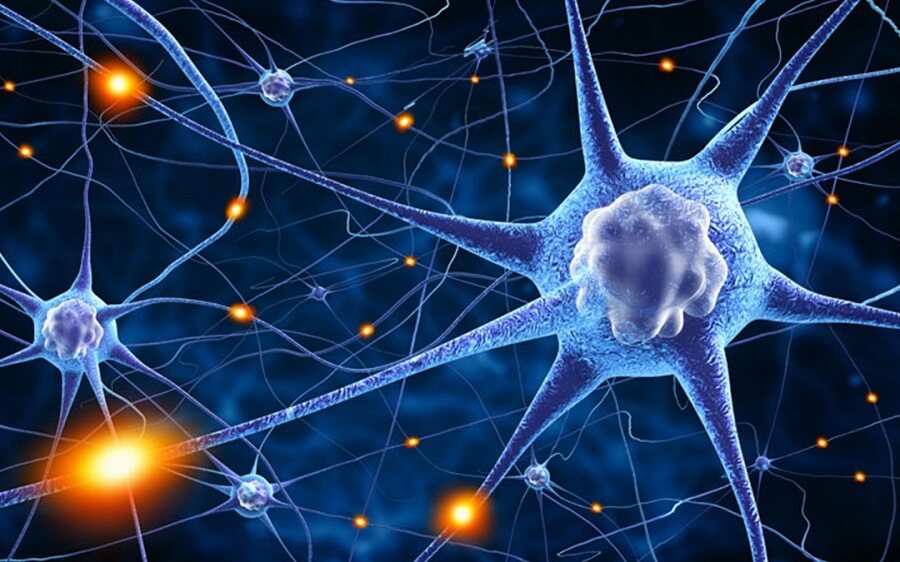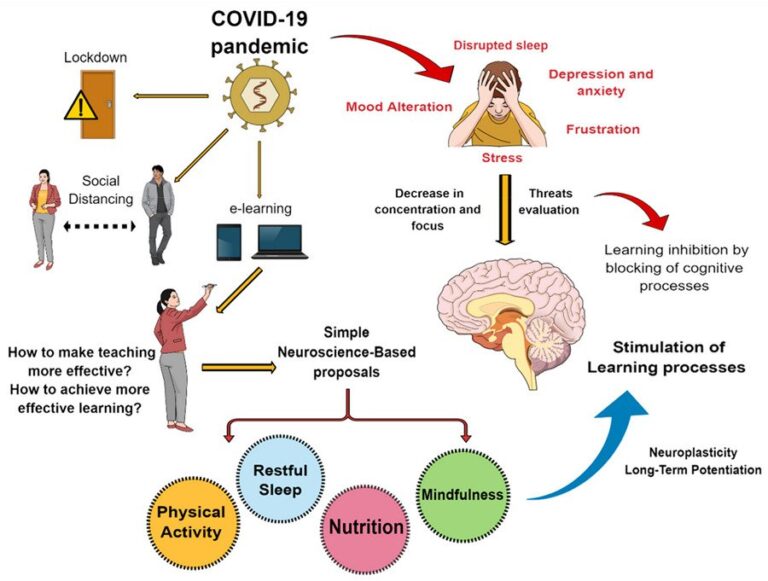In recent decades, researchers have confirmed that the brain adapts every day, and this occurs even in older adults. What has resulted in positioning the human brain as a highly dynamic system capable of being remodeled throughout all stages of life.
The keywords for this new approach to the brain are neuroplasticity and neurogenesis. Neuroplasticity refers to the brain’s permanent ability to change and reconfigure itself in response to stimulation of learning and experience. Neurogenesis is the ability to create new neurons and neural connections throughout life.
As you might expect, neuroplasticity definitely declines with age. However, this is not as black and white as was believed a few years ago. Read on to find out how this happens.
Neuroplasticity and age
Neuroplasticity is the brain’s ability to adapt to the environment, and it benefits from brain training to try to slow down the aging process.
When neuroplasticity occurs, both neurons and synapses increase in number. And as time passes, our actions and thoughts are able to reinforce certain neural pathways that generate important physiological changes in the brain.
With age, the brain’s ability to change is less, but it exists therefore more effort is required.
This is much more complex than it sounds, but it is the basis for why there is a clear relationship between neuroplasticity and aging.
While not all aspects of the relationship between neuroplasticity and age are completely clear even to neuroscience experts, what we know today is that:
- Although neuroplasticity can decrease with age, several factors, such as exercise and stress, have been shown to affect one or more mechanisms of plasticity.
- Neurogenesis (growth of new neurons) can be a mechanism that supports plasticity and occurs at all stages of life.
- The connections between neurons increase dramatically between birth and two or three years of age; they are reduced by half during adolescence and remain mostly static during adulthood.
- People with greater plasticity and memory in adulthood are those who have developed specific skills and healthy lifestyles when young.
- Certain events, such as brain damage, can significantly affect neuroplasticity.
Neuroplasticity in children
Children’s brains are the ones with the greatest plasticity. Neurons and synapses experience a great increase in number even before a person can perform basic functions such as talking and walking.
Between birth and two to three years of age, the number of synapses in the brain increases from 2,500 to 15,000 per neuron. In fact, an average child has twice as many synapses as an adult. (1)
These connections are slowly eliminated as the child grows and begins to form his own unique patterns and connections.
There are four main types of neuroplasticity seen in children:
- Adaptive – Changes that occur when children practice a special skill and allow the brain to adapt to functional or structural changes in the brain.
- Impairment: changes occur due to genetic or acquired disorders.
- Plasticity that makes the brain vulnerable to injury – Damaging neural pathways are formed that make injury more likely or more shocking.
- These processes are stronger and more pronounced in young children, allowing them to recover from injury much more effectively than most adults. In children, profound cases of neuroplastic growth, recovery, and adaptation can be seen.
Neorplasticity in adolescents
Between youth and adulthood, a phenomenon known as pruning occurs in the brain. Pruning is the reduction in the number of neurons and synapses that formed during early life.
This elimination is based on the experiences that the person has in life; the connections that a person uses most frequently are maintained and the weak connections are eliminated. By the time an individual reaches late adolescence, the number of synaptic connections between neurons has been reduced by about half.
Neuroplasticity in adults
Although the number of neurons and synapses was long thought to be static in adulthood, today this concept is viewed as erroneous.
Neuroplasticity is not absent in adults, but it is generally observed less than in children and with less force; however, the adult brain is still capable of extraordinary changes.
Evidence for neuroplasticity in the adult brain has been observed primarily in individuals who became adept at a particular skill. Why? Because the changes associated with learning happen in a massive way when we become experts in a specific domain.
Learning can cause the brain to increase the number of connections between neurons and is a typical example of neuroplasticity in adults.
In older adults, neuroplasticity can restore old and lost connections and functions that have not been used in some time, improve memory, and even improve general cognitive skills.
Neuroscience experts continue to work hard in their research to find patterns of behaviors that stimulate neuroplasticity in adults and help with certain diseases of the cerberus.
For example, one study proposes an effective memory training program combined with neurostimulation could increase gray matter thickness and thus affect functional activation patterns. (2)
Improving memory could reduce stress, improve mood,
sleep better, and perhaps even facilitate social interactions and activity levels.
ABSTRACT
Neuroplasticity is the brain’s ability to change and adapt to the environment.
Generally, the potential for change is not as great in older adults as it is in children and young adults, but with sustained effort and a healthy lifestyle, adults are just as capable of promoting positive change and growth in life. their brains like the younger generations.
The aging of the brain, its biological changes and alterations in our behavior, are as complex and idiosyncratic as the brain itself, and it is qualitatively modified throughout life.






